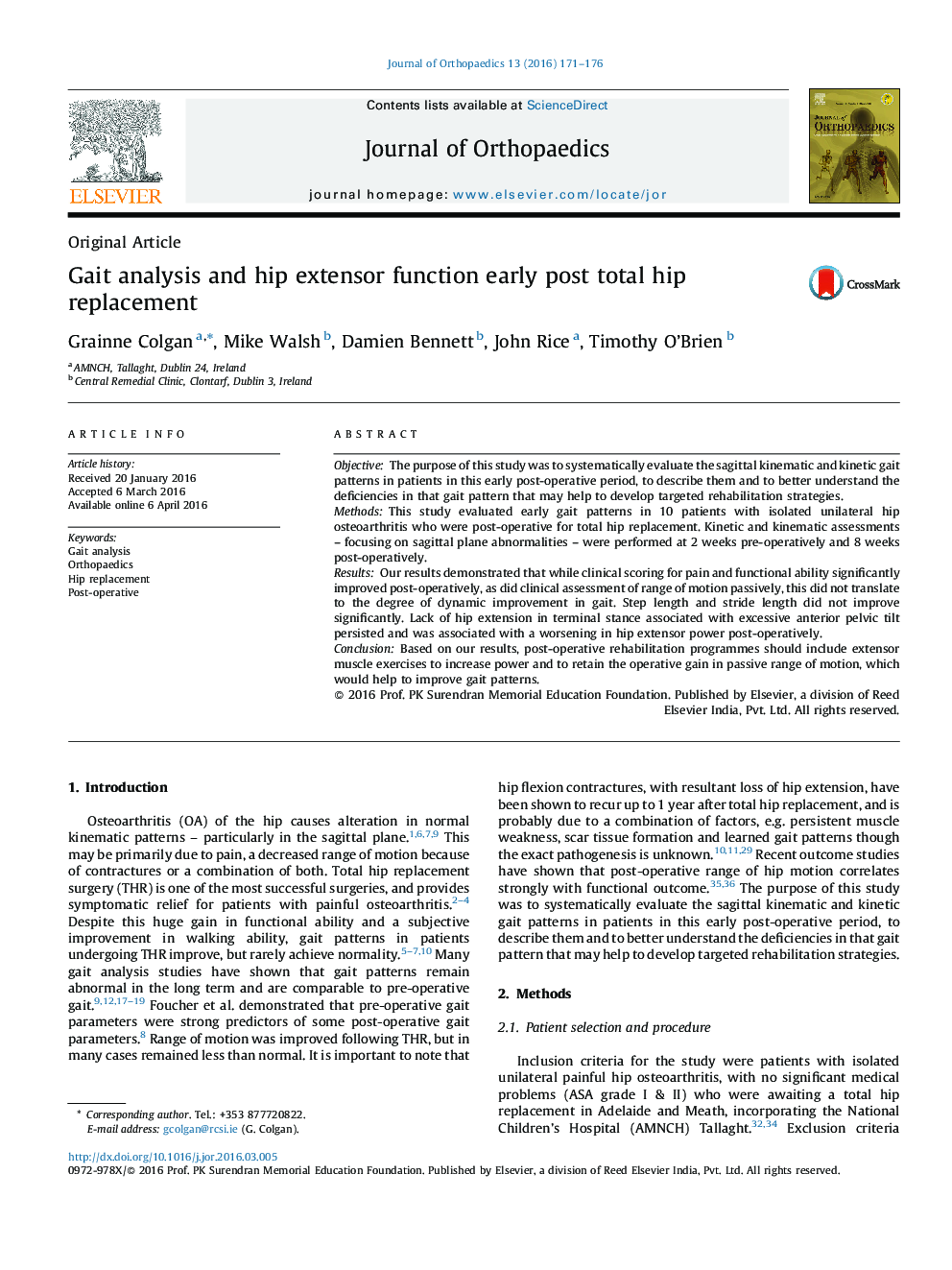| Article ID | Journal | Published Year | Pages | File Type |
|---|---|---|---|---|
| 3251750 | Journal of Orthopaedics | 2016 | 6 Pages |
ObjectiveThe purpose of this study was to systematically evaluate the sagittal kinematic and kinetic gait patterns in patients in this early post-operative period, to describe them and to better understand the deficiencies in that gait pattern that may help to develop targeted rehabilitation strategies.MethodsThis study evaluated early gait patterns in 10 patients with isolated unilateral hip osteoarthritis who were post-operative for total hip replacement. Kinetic and kinematic assessments – focusing on sagittal plane abnormalities – were performed at 2 weeks pre-operatively and 8 weeks post-operatively.ResultsOur results demonstrated that while clinical scoring for pain and functional ability significantly improved post-operatively, as did clinical assessment of range of motion passively, this did not translate to the degree of dynamic improvement in gait. Step length and stride length did not improve significantly. Lack of hip extension in terminal stance associated with excessive anterior pelvic tilt persisted and was associated with a worsening in hip extensor power post-operatively.ConclusionBased on our results, post-operative rehabilitation programmes should include extensor muscle exercises to increase power and to retain the operative gain in passive range of motion, which would help to improve gait patterns.
